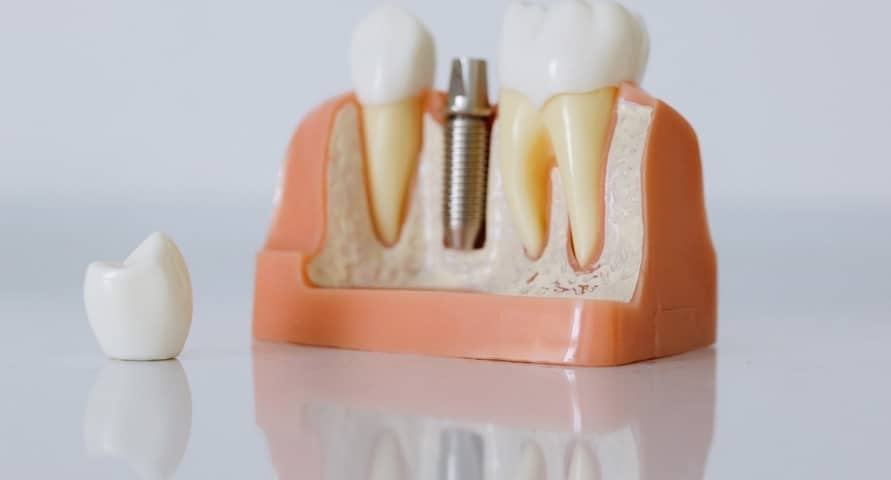245 11th Ave NE Hickory, NC 28601
Dental Implant Recovery Timeline: From Surgery to a Fully Restored Smile

Dental implant recovery transforms smiles but needs patience and pragmatic planning. The majority of patients hope for instant gratification. The fact is that healing is slow, and different stages make up the end result. Understanding the timeline avoids unwarranted anxiety and makes recovery simpler.
Implant healing is a mix of physical and emotional, testing resilience and willpower. Every phase, from swelling to osseointegration, matters in the case of long-term stability and success.
This guide describes recovery phases beautifully, with a focus on safe methods and sensible expectations for a healthier smile and renewed smile.
What to Anticipate Right After Dental Implant Surgery
Dental implant recovery begins during the initial healing phase. Swelling, tenderness, and a little bleeding are what patients can anticipate. Resting and icing pack pain relief promote clot formation. Prescribed medication calms pain and inflammation within a few hours.
The first 24-48 hours are critical and need care with food and oral hygiene. Avoiding hot food and heavy exercise prevents stressing the surgical site. Fluid intake without a straw protects against blood clots and facilitates natural healing. Adhering to dental counsel ensures smooth adaptation immediately after getting dental implants in Hickory.
The First Week: Early Healing and Soft Foods
Dental implant recovery within the first week occurs day by day. Swelling decreases and discomfort decreases gradually. They must eat soft, high-calorie foods like eggs, oatmeal, and yogurt. Ongoing hydration without the application of straws protects blood clots and healing gums.
Gentle brushing prevents infection and protects the implant site from undue stress. Foods should be cool or lukewarm and avoid hard or spicy food. Resting in regular periods remains a concern during this stage of dental implant healing. By the end of the week, pain and discomfort lessen considerably, and energy levels return to normal.
Weeks 2-6: Osseointegration and Healing of Bone and Tissue
Bone and tissue healing become more solid between weeks 2 and 6. Patients increasingly adopt day-to-day routines. Osseointegration, the integration of bone with the implant, begins quietly but persistently.
Regular dental checkups confirm proper progress and identify early complications. Brushing is light, and careful flossing protects healing gums and tissues. The patients can find speaking and eating easier. The body becomes more active without any trauma being inflicted on the mouth. Patience is necessary because it provides a basis for the long-term stability of the implant.
3-6 Months: Stability and Osseointegration
There needs to be patience while osseointegration takes place. This procedure takes from three to six months. The implant integrates firmly with the jawbone, and a solid root replacement is established.
Routine examinations verify gum health and implant integration success. Warning signs of persistent swelling or pain require immediate attention. Success depends on strict adherence to hygiene instructions and regularly scheduled follow-up appointments. This extended healing period seems lengthy, but it guarantees long-term success. Patience during osseointegration provides a stable base before crowns or bridges complete the restored smile.
Securing the Abutment and Crown
Dental implant recovery is finished with the final stage when abutments and crowns are placed. Abutments connect implants to visible restorations. Dentists place custom crowns or bridges and bring function and aesthetics.
Patients have a sense of satisfaction seeing their completed smile. The final step finishes months of adaptation and healing. Accurate alignment makes the bite comfortable and natural.
This is the real step from function to surgery. Dental implant healing is finished with the restoration of confidence, stability, and comfort while consuming food.
Factors That Influence Recovery Timeline
Healing time for dental implants in Hickory varies with general health, bone density, and daily routines. Smokers have slower healing due to compromised blood flow. Chronic conditions impede integration and tissue growth. Younger people heal quickly than older adults.
Routines of oral hygiene greatly contribute to success and reduce the opportunity for infection or implant failure. Several implants or bone grafting extend the timeline. Every factor contributes to individual variability and requires professional advice. Tailored treatment plans maximize easier recovery and higher long-term implant success rates.
Tips for Smooth Recovery
Healing and energy replenishment are accelerated by healthy foods. Regular care and good habits aid in dental implant recovery. Hydration supports tissue repair and oral health. Daily brushing and comforting rinsing protect the implant site. Trips to the dentist allow for monitoring progress closely.
Avoiding smoking produces faster recovery and a successful implant. Patients must follow all guidelines and monitor for unusual symptoms. Open discussion with dentists allows for the resolution of issues in an early stage. Rest and activity balance promote healing. Pledge ensures a healthier, stronger smile outcome.
Recovery from dental implants happens in a number of phases, each of which determines the outcome. From swelling to osseointegration, there is patience and persistence. Each step leads to the return of smiles with lasting stability. Compliance with dental advice prevents more complications and long-term success.
The reader is invited to have confidence in the process, encourage health, and be consistent with care. A renewed smile is worth it. For customized care, visit our dental office to schedule your own dental implant recovery today.




